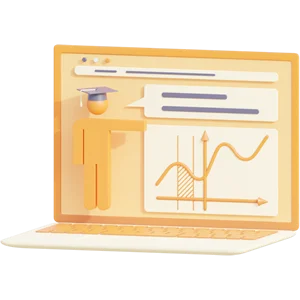100%Complete (verified answers) Graded A+ATI COMPREHENSIVE EXIT EXAM – PRIORITY ONE 1 The nurse should be aware of signs of physical, sexual, and emotional abuse and comply with state or provincial mandatory reporting. Signs of abuse may include: • Shaken baby syndrome (ie, irritability or lethargy, poor feeding, emesis, seizures) • Burns in the shape of household items (eg, iron, spatula), from cigarettes, or from immersion in scalding liquid • Repeated injuries in varied stages of healing (eg, bruises, burns, fractures) (Option 4) • Injuries to genitalia • Lapsed time between the injury and the time when care is sought • Inconsistency between the injury and the caregiver's explanation of the injury (eg, client's developmental age, mechanism of injury) (Options 1, 2, and 3) Toddlers and young children are prone to many accidental injuries (eg, aspiration or poisoning from foreign objects in the mouth, climbs onto and falls from furniture, pulling of objects from the table). The injuries and caregivers' explanations are reasonable for these clients. Prior to discharge, the nurse should instruct caregivers on child safety measures within the home to prevent future injury. Educational objective: The nurse should be aware of signs of physical, sexual, and emotional abuse, including repeated injuries in varied stages of healing, shaken baby syndrome, and injuries to genitalia. Suspicion of abuse necessitates mandatory reporting according to state or provincial laws. Paranoia is the belief that others desire or are attempting to persecute or harm (eg, spy on, cheat, follow, poison) the individual. Clients with paranoid delusions often are suspicious of other people, including health care professionals, and may refuse treatment or aid out of fear of being harmed. Management of paranoia focuses on building trust with and grounding the client in reality. When the client believes food has been poisoned, the nurse can build trust and promote adequate nutrition by offering unopened, individually packaged food (Option 4). Educational objective: Nurses caring for clients who have paranoid delusions must work to build a trusting relationship and ground the client while ensuring basic needs are met (eg, nutritional intake). When clients believe food is poisoned, the nurse should offer unopened, individually packaged food to promote adequate intake without reinforcing delusions. Steps for indwelling urinary catheter insertion for the male client include: • Perform hand hygiene and open sterile catheterization kit (Option 3). • Apply sterile gloves and place sterile fenestrated drape with opening centered over penis (Option 2). • Maintaining sterility of gloves, arrange remaining kit supplies on sterile field. Remove protective covering from catheter, lubricate catheter tip, and pour antiseptic solution over cotton balls or swab sticks. • Firmly grasp penis with nondominant hand, retracting foreskin if present. Nondominant hand is now considered contaminated and remains in this position for duration of procedure (Option 6). • Use dominant (sterile) hand to cleanse in a circular motion from the meatus to the glans with antiseptic solution using cotton balls or swab sticks. Use new cotton ball/swab stick with each swipe (Option 4). • Use dominant hand to pick up catheter and insert it until urine return is visualized in catheter tubing (Option 5). • Advance to bifurcation of catheter tubing. Hold in place and inflate balloon (Option 1). Urine return in catheter tubing may be from urethra and does not indicate that balloon tip is fully inside bladder. Because male urethra varies in length, balloon should not be inflated until catheter is fully advanced. Educational objective: To insert an indwelling urinary catheter in a male client, perform hand hygiene, apply sterile gloves and place sterile fenestrated drape, arrange supplies on sterile field, grasp penis with nondominant hand, cleanse from meatus to glans using dominant hand, insert catheter until urine return is visualized, advance catheter to tubing bifurcation, and inflate balloon. Allowing family to be present during resuscitative efforts and invasive procedures can help the family process and cope with the client's condition, alleviate fears and anxiety, and facilitate the grieving process if the expected outcome is poor. The nurse should permit the client's spouse to enter the room and provide a location to observe (out of the care team's way) and another nurse should explain the treatment measures that are occurring (Option 1). Educational objective: 100%Complete (verified answers) Graded A+ATI COMPREHENSIVE EXIT EXAM – PRIORITY ONE 2 During resuscitative efforts and invasive procedures, the nurse should allow family members to be present if they desire. ATI COMPREHENSIVE EXIT EXAM – PRIORITY ONE 3 Allowing family members to be present helps with coping, alleviates fear and anxiety, and facilitates the grieving process in the case of a poor outcome. Central venous catheters (CVCs) are used in the treatment of clients who require long-term IV access or are prescribed hypertonic solutions (eg, total parenteral nutrition) or vesicant medications. CVCs can serve as a portal of entry for bacteria, which increases the risk of developing serious bloodstream infections. Nurses caring for clients with CVCs should report any new or worsening signs of infection (eg, fever, chills, erythema at the CVC site) to the health care provider because central line–related bloodstream infections (CRBSIs) require prompt treatment to prevent possible sepsis. In response to a possible CRBSI, the CVC should be removed as soon as possible to prevent continued exposure to the infection source. Blood cultures should be obtained before initiating antibiotic therapy, as antibiotics may contaminate the sample and prevent identification of the infectious organism (Option 4). Educational objective: When caring for a client with signs of a central line–related bloodstream infection, the nurse should obtain blood cultures and remove the device, if possible, before beginning antibiotic therapy. Other nursing interventions (eg, symptom management, documentation) should be done after initiating treatment of the infection. When making room assignments, it is important to remember that a client with an active or suspected infection should not be paired with a client who has a fresh surgical wound or is immunocompromised. A client having an asthma exacerbation does not have an infection and is not at risk for spreading infection to a client who had recent bowel resection surgery (Option 3). Educational objective: When preparing room assignments, the nurse should not place a client who has a fresh surgical wound or is immunocompromised in a ro
100%Complete (verified answers) Graded A+ATI
COMPREHENSIVE EXIT EXAM – PRIORITY ONE
1
The nurse should be aware of signs of physical, sexual, and emotional abuse and comply with state or provincial mandatory
reporting. Signs of abuse may include:
• Shaken baby syndrome (ie, irritability or lethargy, poor feeding, emesis, seizures)
• Burns in the shape of household items (eg, iron, spatula), from cigarettes, or from immersion in scalding liquid
• Repeated injuries in varied stages of healing (eg, bruises, burns, fractures) (Option 4)
• Injuries to genitalia
• Lapsed time between the injury and the time when care is sought
• Inconsistency between the injury and the caregiver's explanation of the injury (eg, client's developmental age,
mechanism of injury)
(Options 1, 2, and 3) Toddlers and young children are prone to many accidental injuries (eg, aspiration or poisoning from
foreign objects in the mouth, climbs onto and falls from furniture, pulling of objects from the table). The injuries and
caregivers' explanations are reasonable for these clients. Prior to discharge, the nurse should instruct caregivers on child
safety measures within the home to prevent future injury.
Educational objective:
The nurse should be aware of signs of physical, sexual, and emotional abuse, including repeated injuries in varied stages of
healing, shaken baby syndrome, and injuries to genitalia. Suspicion of abuse necessitates mandatory reporting according to
state or provincial laws.
Paranoia is the belief that others desire or are attempting to persecute or harm (eg, spy on, cheat, follow, poison) the
individual. Clients with paranoid delusions often are suspicious of other people, including health care professionals, and may
refuse treatment or aid out of fear of being harmed.
Management of paranoia focuses on building trust with and grounding the client in reality. When the client believes food
has been poisoned, the nurse can build trust and promote adequate nutrition by offering unopened, individually packaged
food (Option 4).
Educational objective:
Nurses caring for clients who have paranoid delusions must work to build a trusting relationship and ground the client while
ensuring basic needs are met (eg, nutritional intake). When clients believe food is poisoned, the nurse should offer unopened,
individually packaged food to promote adequate intake without reinforcing delusions.
Steps for indwelling urinary catheter insertion for the male client include:
• Perform hand hygiene and open sterile catheterization kit (Option 3).
• Apply sterile gloves and place sterile fenestrated drape with opening centered over penis (Option 2).
• Maintaining sterility of gloves, arrange remaining kit supplies on sterile field. Remove protective covering from
catheter, lubricate catheter tip, and pour antiseptic solution over cotton balls or swab sticks.
• Firmly grasp penis with nondominant hand, retracting foreskin if present. Nondominant hand is now
considered contaminated and remains in this position for duration of procedure (Option 6).
• Use dominant (sterile) hand to cleanse in a circular motion from the meatus to the glans with antiseptic solution
using cotton balls or swab sticks. Use new cotton ball/swab stick with each swipe (Option 4).
• Use dominant hand to pick up catheter and insert it until urine return is visualized in catheter tubing (Option 5).
• Advance to bifurcation of catheter tubing. Hold in place and inflate balloon (Option 1). Urine return in catheter
tubing may be from urethra and does not indicate that balloon tip is fully inside bladder. Because male urethra
varies in length, balloon should not be inflated until catheter is fully advanced.
Educational objective:
To insert an indwelling urinary catheter in a male client, perform hand hygiene, apply sterile gloves and place sterile
fenestrated drape, arrange supplies on sterile field, grasp penis with nondominant hand, cleanse from meatus to glans using
dominant hand, insert catheter until urine return is visualized, advance catheter to tubing bifurcation, and inflate balloon.
Allowing family to be present during resuscitative efforts and invasive procedures can help the family process
and cope with the client's condition, alleviate fears and anxiety, and facilitate the grieving process if the expected outcome is
poor. The nurse should permit the client's spouse to enter the room and provide a location to observe (out of the care team's
way) and another nurse should explain the treatment measures that are occurring (Option 1).
Educational objective:
100%Complete (verified answers) Graded A+ATI
COMPREHENSIVE EXIT EXAM – PRIORITY ONE
2
During resuscitative efforts and invasive procedures, the nurse should allow family members to be present if they desire.
ATI COMPREHENSIVE EXIT EXAM – PRIORITY ONE
3
Allowing family members to be present helps with coping, alleviates fear and anxiety, and facilitates the grieving process in
the case of a poor outcome.
Central venous catheters (CVCs) are used in the treatment of clients who require long-term IV access or are prescribed
hypertonic solutions (eg, total parenteral nutrition) or vesicant medications. CVCs can serve as a portal of entry for
bacteria, which increases the risk of developing serious bloodstream infections. Nurses caring for clients with CVCs should
report any new or worsening signs of infection (eg, fever, chills, erythema at the CVC site) to the health care provider
because central line–related bloodstream infections (CRBSIs) require prompt treatment to prevent possible sepsis.
In response to a possible CRBSI, the CVC should be removed as soon as possible to prevent continued exposure to the
infection source. Blood cultures should be obtained before initiating antibiotic therapy, as antibiotics may contaminate the
sample and prevent identification of the infectious organism (Option 4).
Educational objective:
When caring for a client with signs of a central line–related bloodstream infection, the nurse should obtain blood cultures and
remove the device, if possible, before beginning antibiotic therapy. Other nursing interventions (eg, symptom management,
documentation) should be done after initiating treatment of the infection.
When making room assignments, it is important to remember that a client with an active or suspected infection should not
be paired with a client who has a fresh surgical wound or is immunocompromised. A client having an asthma
exacerbation does not have an infection and is not at risk for spreading infection to a client who had recent bowel resection
surgery (Option 3).
Educational objective:
When preparing room assignments, the nurse should not place a client who has a fresh surgical wound or is
immunocompromised in a ro
Preview document (3 van de 45 pagina's)
Voordelen van Knoowy
€ 10,89
 Niet tevreden? Geld terug
Niet tevreden? Geld terug
 Document direct te downloaden
Document direct te downloaden
 € 0,50 korting bij betalen met saldo
€ 0,50 korting bij betalen met saldo
-
 Ontvang gratis oefenvragen bij document
Ontvang gratis oefenvragen bij document

Specificaties
- School: Chamberlain College Of Nursing
- Opleiding: NURSING
- Vaknaam: Nursing
- Alle documenten voor dit vak ›
- Soort verslag: Priority one
Document
- Rubriek: Onderzoeken & Scripties
- Gemaakt op: 28-12-2023
- Type: .pdf
- Pagina's: 45
- Taal: English
Tags
Verkoper
ALL DOCUMENTS ON THIS PAGE ARE ON OFFER FROM 05/08/2024-07/011/2024
NURSING EXAMS AND TEST BANKS. Contact us, https://www.docsity.com/en/users/profile/HESISOLUTIONS/
to fetch it for you in minutes if we do not have it in this shop .BUY WITHOUT DOUBT!!!!Always leave a review after purchasing any document so as to make sure our customers are 100% satisfied.
Verdienen aan je samenvattingen?
Vakken van NURSING - Chamberlain College Of Nursing
Meer NURSING ›ati ati comprehensive predictor ati pharmacology proctored community health comprehensive fundamentals health care health care / nursing health care/ nursing healthcare hesi hesi rn exit leadership maternal newborn med surg medical surgical mental health nurs nursing nursing & health nutrition pediatrics pharmacology test bank tncc
Al meer dan 146.000 tevreden studenten
-
AnnDanckaert
Knoowy is the place to be! Steeds de moeite om eens na te gaan naar verslagen over uw opleiding.
-
WilmaSchaapman
Gebruik het! Knoowy heeft een uitgebreid en divers aanbod en het scheelt je veel tijd met leren.
-
FranCeulemans
Handige bron om samenvattingen te vinden, vorige beoordelingen helpen hier zeker bij!
-
Robin33
Snel, betrouwbaar, veel aanbod van samenvattingen. Goed en duidelijk weergegeven.
-
sterrevanlommel
Knoowy is heel handig om te gebruiken. Zeker aan te raden.
-
MartineDerde
Knoowy werkt heel goed. Ik kon de inhoud direct downloaden na betaling.
-
pancha43
Knoowy is zeker een fijn platform waar studenten goede samenvattingen kunnen vinden die ondersteunend werken voor het examen.
-
pensieve
Deze site is een uitkomst als samenvatten niet je sterkste punt is. Zeker als je moet leren voor toetsen kun je hier alle nodige info vinden. Win-win.
 Actie: ontvang 10% korting bij aankoop van 3 of meer items!
Actie: ontvang 10% korting bij aankoop van 3 of meer items!
Actie: ontvang 10% korting bij aankoop van 3 of meer items!








